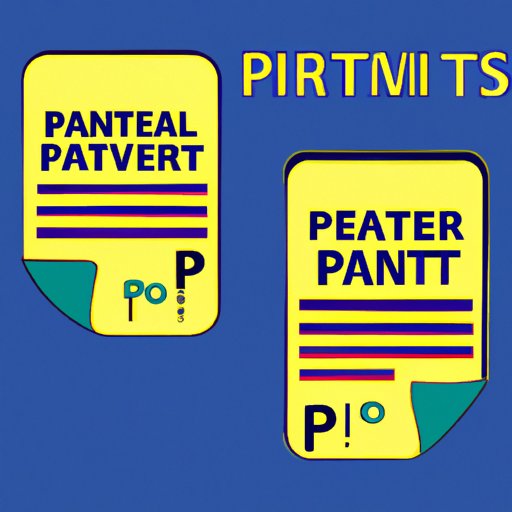Introduction
You’ve come up with an innovative and groundbreaking invention that has the potential to change the game in your industry. But with great ideas come great risks, and if you don’t take steps to protect your invention, it can easily fall into the wrong hands. So, how can you safeguard your idea and ensure that no one else can steal it or use it without your permission?
In this article, we’ll explore the various options available to protect your invention, from filing for patents to using non-disclosure agreements, trademarks, copyrights, and technology-based protection. By the end of this guide, you’ll have a comprehensive understanding of the steps you need to take to keep your invention safe and secure.
Option 1: File for a Patent
If you want to prevent others from making, using, or selling your invention without your permission, filing for a patent is the most common and effective way to achieve that. A patent is a legally recognized document that gives you the right to exclude others from making, using, or selling your invention for a specified period.
There are three types of patents: utility patents, design patents, and plant patents. A utility patent covers the functionality of your invention, while a design patent covers its appearance. A plant patent is used for the invention of a new variety of plant.
The patenting process can be lengthy and expensive, so it’s important to do your research before starting. You’ll need to conduct a patent search to see if your invention is already patented, and you’ll need to prepare a detailed patent application that will be reviewed by the United States Patent and Trademark Office (USPTO).
When filing for a patent, it’s crucial to provide clear and detailed information about your invention, including its purpose, design, benefits, and potential uses. You must also include any relevant drawings or diagrams that can help illustrate your invention’s design and function.
To increase your chances of success, it’s recommended to hire a patent attorney who can guide you through the process and provide expert advice on filing a successful application.
Option 2: Keep It a Secret
If filing for a patent is not an option for you, or if you want to keep your invention private, your best course of action is to keep it a secret. This means not sharing any information about your invention with anyone who might be interested in stealing or copying it.
During development, it’s important to limit access to your invention and keep it confidential. This means working in a secure environment, restricting access to any documents related to your invention, and making sure that anyone involved in the development process signs a non-disclosure agreement (NDA).
The benefits of keeping your invention a secret are clear: if no one knows about it, they can’t steal it. However, it’s important to note that secrecy is not foolproof, and there is the risk that your invention can still be discovered and copied by someone else.
Option 3: Use Non-Disclosure or Confidentiality Agreements
Non-disclosure agreements (NDAs) and confidentiality agreements are legal contracts that prohibit parties involved from sharing confidential information about your invention with third parties. NDAs can be used to ensure that everyone who has access to your invention understands that they cannot disclose any information about it to anyone without your permission.
NDAs are typically used in business settings, such as when working with contractors, investors, or potential business partners. It’s important to have a lawyer review any NDA you plan to use to ensure that it meets your needs and is enforceable in court.
Option 4: Use Trademarks and Copyrights
Trademarks and copyrights are intellectual property protections that can be used to safeguard different aspects of your invention. A trademark is used to protect your invention’s name, logo, or slogan, while a copyright protects any original works that are part of your invention, such as software code or written material.
While trademarks and copyrights do not provide the same level of protection as patents, they can still be useful in protecting your invention’s brand and design. It’s important to register your trademark or copyright with the appropriate authorities to ensure that you have legal grounds to protect it.
Option 5: Use Technology for Protection
In today’s digital age, technology can provide additional ways to protect your invention from theft or unauthorized use. Digital watermarking, for example, can be used to embed invisible codes or markings in your invention’s digital files, making it easy to identify and track.
Encryption software can also be used to secure your invention’s digital data, making it unreadable to anyone who does not have the correct decryption key. Other tech-based tips include using password-protected access to data, using secure cloud storage systems, and regularly backing up your data to prevent loss or theft.
Conclusion
Protecting your invention is essential if you want to prevent others from stealing or copying it. There are several options available, including filing for a patent, keeping it a secret, using NDAs or confidentiality agreements, using trademarks and copyrights, and using technology-based protection.
Each option has its benefits and drawbacks, so it’s important to do your research and determine which option is best for your specific situation. Whatever option you choose, taking steps to protect your invention can ensure that your hard work and innovation are not taken for granted.
Remember, prevention is key, and by taking measures to safeguard your invention now, you can rest assured that it will be protected for years to come.
(Note: Is this article not meeting your expectations? Do you have knowledge or insights to share? Unlock new opportunities and expand your reach by joining our authors team. Click Registration to join us and share your expertise with our readers.)
